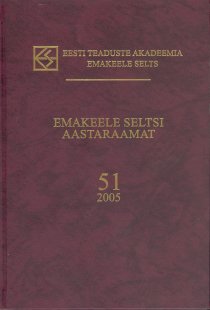Keelekontakt ja kakskeelsus nüüdisaegse kontaktlingvistika poolt vaadatuna
Language Contact and Bilingualism in Modern Contact Linguistics
Author(s): Anastassija ZabrodskajaSubject(s): Language and Literature Studies
Published by: Teaduste Akadeemia Kirjastus
Keywords: Language contact; borrowing; language maintenance; language shift; multilingualism; bilingualism; code-switching; SLA theory; first language (L1); second language (L2)
Summary/Abstract: The main aim of this paper is to give a brief overview of some relevant literature on language contacts and bilingualism. Sarah Thomason and Terence Kaufman’s theory of contact-induced language changes is used as a theoretical background. Thomason and Kaufman distinguish between two basic types of contact situation: language maintenance and language shift. They identify the underlying processes of the two types of contacts as borrowing (in maintenance) and interference through shift. According to the borrowing scale of Thomason and Kaufman, borrowing begins with vocabulary and continues with structural changes. There are many other terms used in connection with language maintenance or shift. Language death is the loss of a language, language loss or language attrition is used to mean the disappearance of a language. The terminology describing the results of language contacts varies depending on the methods and approaches involved. Language contact means that the individuals develop some level of bilingualism. A person is considered bilingual if he (or she) uses two languages in their everyday life. The second part of the article concerns the possible differences among various kinds of bilinguals. Both societal and individual levels of bilingualism are viewed as two sides of the same coin – language choice. The first is a large-scale phenomenon which may assist in drawing conclusions about societal language maintenance or shift. Of course, individual code-switching occurs in the context of group choices and vice versa. Due to creative and unpredictable language behaviour of speakers, all kinds of contact-induced language changes are possible.
Journal: Emakeele Seltsi aastaraamat
- Issue Year: 2005
- Issue No: 51
- Page Range: 148-169
- Page Count: 21
- Language: Estonian

